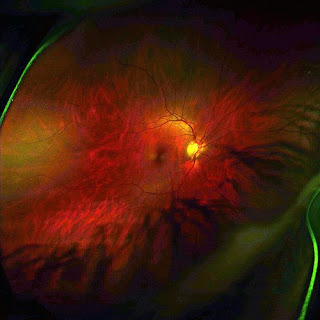 This blog primarily covers the ethics of translational clinical trials. Products tested in such studies, should they progress towards licensure, will eventually fall under the oversight of drug regulatory agencies like the FDA. How prepared will the FDA be to protect the public once these highly complex interventions are introduced to clinical practice? And when they are tested in early phase trials, how much should IRBs be reassured by the fact that sponsors can show a letter of “no objection”?
This blog primarily covers the ethics of translational clinical trials. Products tested in such studies, should they progress towards licensure, will eventually fall under the oversight of drug regulatory agencies like the FDA. How prepared will the FDA be to protect the public once these highly complex interventions are introduced to clinical practice? And when they are tested in early phase trials, how much should IRBs be reassured by the fact that sponsors can show a letter of “no objection”?
The FDA has long been considered the world’s “gold standard” for the evaluation of drug safety and efficacy. But here is a list of NYTimes headlines over the last 6 months that suggest that standards at the agency have fallen.
Panel’s Bipartisan View: FDA is Underfinanced (April 16, 2008). Headline says it all
Drug Makers Near Old Goal: A Legal Shield (April 6, 2008). Reporting that, if the FDA screws up its review, courts are increasingly reluctant to allow injured parties to sue drug and device manufacturers.
Tainted Drugs Put Focus on the FDA (March 17, 2008). FDA violated its own safety rules in not inspecting overseas drug manufacturing facilities.
Justices Shield Medical Devices from Lawsuits (February 21, 2008). Reporting that the Supreme Court found that device manufacturers have immunity from tort litigation if the FDA approves them– even though FDA standards on device approval are notoriously weak.
FDA Seeks to Broaden Range of Use for Drugs (February 16, 2008). Reporting on proposed FDA guidelines that, more or less, would allow drug makers to promote applications of their drugs that have not yet been reviewed or approved by the FDA.
FDA in Crisis: It Needs More Money and Talent (February 3, 2008). Editorial.
Advisors Say FDA’s Flaws Put Lives at Risk (December 1, 2007). Reporting that an FDA Science Board report stated that “FDA’s inability to keep up with scientific advances means that American lives are at risk.”
FDA Tests on Devices Scrutinized (October 23, 2007). Reporting on a letter from Congressman Waxman to the FDA questioning the rigor of their review of a Medtronic implantable defibrillator. (photocredit: sluggerwv 2008, though probably lifted from someone else)
 In the May 1, 2008 issue of Nature, Alison Abbott reports on fraud allegations against Austrian researcher Hannes Strasser for performing an adult stem cell trial for urinary incontinence without having his protocol reviewed by an ethics committee.
In the May 1, 2008 issue of Nature, Alison Abbott reports on fraud allegations against Austrian researcher Hannes Strasser for performing an adult stem cell trial for urinary incontinence without having his protocol reviewed by an ethics committee.








